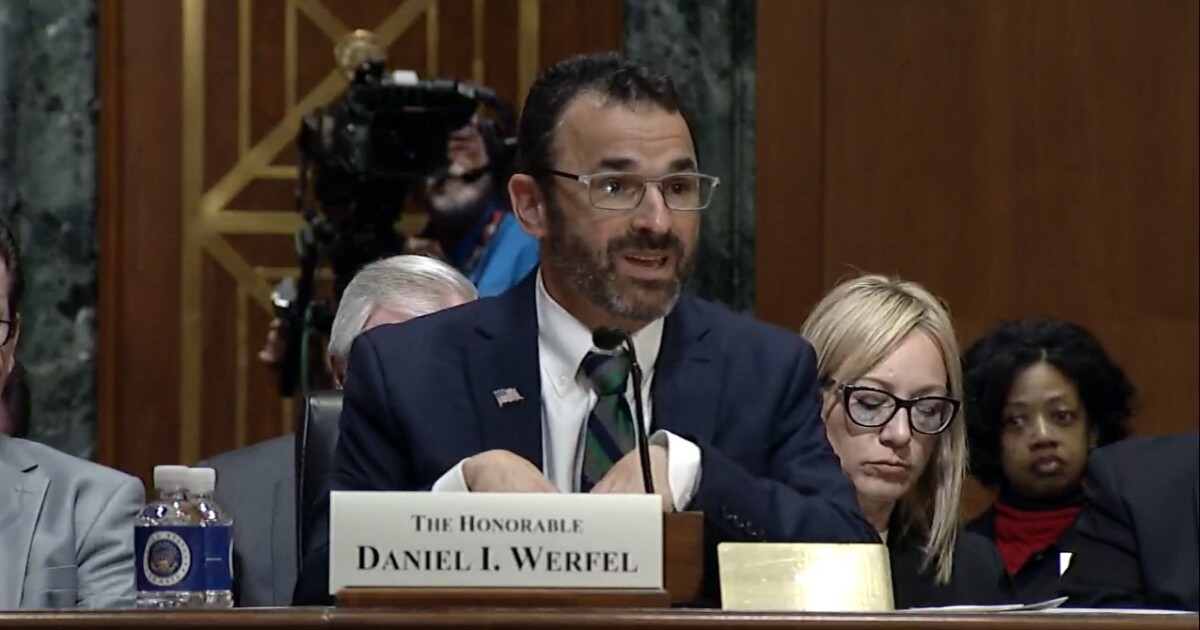The Internal Revenue Service is leveraging artificial intelligence to detect tax evasion as it uses the extra funding from the Inflation Reduction Act to ramp up compliance efforts against large partnerships, corporations and high-income individuals as well as promoters of sophisticated tax-dodging schemes. Initially the agency will be pursuing 1,600 millionaires who owe at least $250,000 in taxes, and 75 large partnerships with an average of over $10 billion in assets.
The IRS said it’s now shifting its attention to the wealthy and away from working-class taxpayers, thanks to the additional billions in funding over 10 years from the Inflation Reduction Act. While the initial funding last year helped with hiring more IRS employees to assist with taxpayer service and alleviate the stress of tax season earlier this year, the IRS is now using the money to hire more employees who can pursue tax evasion by big businesses and individuals, with the help of AI and data analytics to spot suspicious patterns of activity.
“This is a historic time at the IRS,” IRS commissioner Daniel Werfel said during a news conference. “The transformation is continuing at a quickening pace.”

He noted that the IRS had done a “top to bottom review” of its enforcement work, and improving tax compliance is one of the core parts of what the IRS is doing with its Inflation Reduction Act funding.
The years of underfunding before passage of the law last year led to the lowest audit rate for wealthy filers in IRS history.
“As commissioner, I am committed to reversing this trend,” said Werfel. “We want to make sure that new funding will mean more effective compliance efforts on the wealthy, while middle- and low-income filers will continue to see no change in the historically low pre-IRA audit rate for years to come. This new compliance push we are announcing today makes good on the promise of the Inflation Reduction Act to ensure the IRS holds the wealthiest filers accountable to pay the full amount of what they owe. These are laws already on the books passed by Congress, but the IRS hasn’t had the funding for many years to adequately enforce. We can’t let that situation continue, so it’s critical that the agency addresses fundamental gaps in tax compliance among the wealthy that have grown during the last decades.”
AI, data analytics and partnership audits
The IRS is deploying the extra resources it gained under the IRA on cutting-edge technology like AI and data analytics to improve its agents’ visibility into how the wealthy have become more creative on where they shield their income while focusing more staff attention on the areas of greatest abuse.
“We will increase our compliance efforts on those posing the greatest risk to our nation’s tax system, whether it’s the wealthy looking to dodge paying their fair share, or promoters aggressively peddling abusive schemes,” said Werfel.
He discussed several key tax compliance changes taking place now and continuing through the end of the year and into 2024. “These are sweeping and historic changes that will alter the landscape of our compliance work,” said Werfel. “Today, we are announcing a major expansion in high-income, high-wealth and partnership compliance work. As part of this, we will be pursuing 1,600 millionaires who owe at least $250,000. Building off earlier successes announced this summer involving 175 millionaires, the IRS will have dozens of revenue officers focused on these high-end collection cases in fiscal year 2024. This group of millionaires owes hundreds of millions of dollars in taxes, and we will use Inflation Reduction Act resources to get those funds back. If you pay your taxes on time, it should be particularly frustrating when you see that wealthy filers are not. We will make the system more fair.”
The IRS will also be devoting more attention to large partnership audits. “These are some of the most complex cases the IRS faces, and it involves a wide range of activities and industries, where it’s been far too easy for tax evaders to cut corners,” said Werfel. “These are complex cases for the IRS teams to unpack. The IRS has simply not had enough resources or staffing to address partnerships. In a real sense, we’ve been overwhelmed in this area for years. That is beginning to change today.”
The use of AI technology will aid the IRS’s efforts to audit large partnerships. “The complex structures and tax issues present in large partnerships require a focused approach to best identify the highest-risk issues and apply resources accordingly,” said Werfel. “We are using artificial intelligence to help with this effort.”
In 2021, the IRS launched the first stage of its large partnership compliance program with audits of some of the largest and most complex partnership returns, he noted. With extra resources from the Inflation Reduction Act now in place, the IRS is expanding that program to encompass more large partnerships.
“With the help of AI, the selection of these partnership returns for review is the result of groundbreaking collaboration among experts in data science and tax enforcement,” said Werfel. “They have been working side by side to apply cutting-edge machine-learning technology to identify potential compliance risks in the areas of partnership tax, general income tax and accounting, and international tax in a taxpayer segment that historically has been subject to limited examination coverage. Essentially, these new tools are helping us see patterns and trends that we could not see before. As a result, we have higher confidence on where to look and find where large partnerships are shielding income.”
The IRS will start with 75 specific partnerships, each with assets over $10 billion on average, “These are some of the largest in the U.S. that the AI tool helps us identify,” said Werfel. “These organizations will be notified of the audit in the coming weeks.”
The 75 organizations come from different industries, including hedge funds, real estate investment partnerships, publicly traded partnerships, large law firms and others. Starting in October, hundreds of partnerships will receive a special compliance alert from the IRS in the mail about what the agency has identified as an ongoing discrepancy on balance sheet involving partnerships with over $10 million in assets.
“Taxpayers filing partnership returns are showing discrepancies in the millions of dollars in their year-to-year balance sheet, and the number of such discrepancies has been increasing over the years,” said Werfel. “Many of these taxpayers are not attaching the required statements explaining the differences.”
This part of the compliance effort will focus on high-risk large partnerships to quickly address the balance sheet discrepancies. “Prior to the IRA, the IRS did not have the resources needed to follow up and engage with all the large partnerships with such discrepancies,” said Werfel. “However, the IRS will soon have exam personnel in place for new hiring and internal realignment to ramp up this effort.”
In early October, the IRS will start sending out the mailings to about 500 partnerships, and depending upon the response, the IRS will add each to its audit stream for more work.
“We will need to do more in the partnership arena, but this is historic,” said Werfel. “And these are examples of how the Inflation Reduction Act funding will make a difference and help ensure fairness in the tax system.”
Crypto crackdown
The IRS will also continue its work in other areas of compliance that it’s previously targeted, such as abusive micro captive insurance arrangements and syndicated conservation easements. The IRS plans to step up its efforts in the crypto area as well, thanks to the extra funding, and after issuing so-called John Doe summonses to crypto exchanges such as Coinbase and Kraken seeking information on their customers.
“The IRS continues to expand efforts involving digital assets,” said Werfel. “The IRS virtual currency compliance campaign will continue in the months ahead, after an initial review showed the potential for a 75% noncompliance rate among taxpayers identified through the record production of digital currency exchanges. The IRS projects more digital asset cases will be developed for further compliance work in the months ahead.”
FBAR noncompliance
The IRS is also focusing more on high-income taxpayers who use foreign bank accounts to avoid disclosing their assets and the related taxes. It will be targeting the most egregious cases.
“A U.S. person with a financial interest over a foreign financial account is required to file a Report of Foreign Bank and Financial Accounts, or FBAR, if the aggregate value of all foreign financial accounts is more than $10,000 at any time,” said Werfel. “Our analysis of multiyear filing patterns has identified hundreds of possible FBAR nonfilers. They have account balances averaging over $1.4 million. The IRS plans to audit the most egregious potential nonfiler FBAR cases in fiscal year 2024.”
Shell companies
An emerging area of tax evasion involves construction contractors, subcontractors and shell companies.
“The IRS has seen instances where construction contractors are making Form 1099 payments to an apparent subcontractor, but the subcontractor is actually a shell company that has no legitimate business relationship with the contractor,” said Werfel. “Money is paid out to shell companies or exchanged through accounts in the name of the shell company and returned to the original contractor. The IRS will be expanding attention in this area, through both civil audits and criminal investigations. This scheme has already been seen in Texas and Florida, and we believe is active in other areas as well. Work in this area is critical to improve compliance, and it will also help level the playing field for contractors playing by the rules as well as ensuring proper employment tax withholding for vulnerable workers.”
Hiring efforts
In line with its compliance efforts, the IRS is increasing its hiring efforts involving revenue agents who handle audit work at both the senior and entry levels.
“We know we need to make more progress in our hiring efforts, and we will be accelerating,” said Werfel. “This is particularly important given our aging workforce, and the relatively high attrition rates among IRS employees.”
He acknowledged that the efforts to hire and train specialized staff will take time and the IRS will need to catch up on the job attrition it’s seen over the past decade when it had less funding.
Audit fairness
In addition to expanding compliance attention on high-income partnerships and others, he noted, the IRS will focus on ensuring audit fairness and protecting taxpayers from various scams.
“While IRS compliance work will be increasing on the wealthy, scammers and fraudsters frequently target average taxpayers with more modest incomes, so the IRS will be focused on raising consumer awareness on these issues,” said Werfel. “We will be working to protect hardworking people from scammers or fraudsters who try to use the tax system for their schemes. Whether it’s promising people inflated EITC amounts or tricking people into tax-related identity theft, we will continue our compliance efforts on promoters as well as expanding our outreach and education efforts.”
The IRS is continuing to make improvements in audits involving the Earned Income Tax Credit, he noted, and will be implementing changes for next filing season. More details will be available later this fall.
Emerging scams
The IRS will also be warning consumers about the emerging scams it spots, building on efforts like its annual Dirty Dozen list of tax scams. The IRS plans to warn taxpayers about quickly emerging scams.
“As the IRS has seen through the years, scammers frequently adjust or change their tactics to tag onto recent tax law changes or other events that can confuse taxpayers into trying to claim refunds worth thousands of dollars,” said Werfel. “This effort can touch on issues like sick leave, family leave, as well as false fuel tax credit claims.”
The IRS intends to continue its efforts to protect taxpayers, tax professionals and the tax system from identity theft through its Security Summit initiative, a joint effort between the federal government, state taxing agencies, the tax software industry and tax pro community.
“When you look at the totality of these transformation efforts, combined with our ongoing work to improve taxpayer service and new technology, these add up to making for a better, fairer tax system for taxpayers and the nation,” said Werfel. “The success of this effort is critical to the future of serving taxpayers and the nation.”




